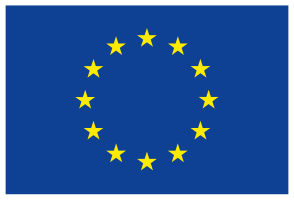Customs, practices, beliefs, traditions, lifestyles, values, memories, stories constitute an important part of the cultural heritage as well as instruments of a self-representation.
For this reason, So distant, Incredibly Close pilot solicits the migrants involved to reflect on their idea of cultural heritage. What does cultural heritage mean for them? And again, which piece of cultural heritage would they take along with them for representing their roots, for not forgetting their cultural identity and not feeling alone?
Who is involved in the activities?
Fondazione Sistema Toscana is currently working with two groups of migrants: a group of about 15 women coming from different countries, such as Brasil, Poland, Iraq, Iran, and a small group of young people coming from Africa (specifically Nigeria, Ghana and Burkina Faso). Creating groups from scratch would have been difficult, so we relied on the professional experience of associations already working with migrants, investigating their interest to collaborate with us for the project purposes, and inserting So distant, Incredibly Close pilot in their already existing cultural offers and social services.
Casa della Donna (https://www.casadelladonnapisa.it/) is a historic feminist association, founded in 1990, that sustains women’s rights against any kind of violence. Among its activities, Casa della Donna is now providing migrant women with free Italian language courses, and our project So distant, Incredibly Close has been integrated into the linguistic offer of the Casa della Donna association, thus increasing their occasions to speak Italian with natives, to put into practice the learned lesson and measure their linguistic competence in different contexts.
ORISS Onlus (http://www.oriss.org/) is a non-profit association consisting of an interdisciplinary group of experts coming from different fields and promoting processes of mutual knowledge and kicks off processes of wellness, with the objective to contribute to the development and health of the human community. We are now working with a small group of migrants, that previously took part of ORISS activities, to experiment museum visits as a form of self-confidence (o empowerment) and social inclusion.
What do the activities consist of?
Museums’ contents become a stimulus to trigger memories and stories of/from migrants visiting museums’ collections. Historical, artistic, naturalistic and scientific heritage, conserved in 4 museums of the Pisa University Museum System, take part in this game of memory:
Museum of calculation and computation instruments, whose rich collections offer a fascinating journey through the history of the European computation methodology, and more generally through the history of European cultural system, that has given rise to the contemporary western technological system.
Gipsoteca of Ancient Art that houses faithful copies of some of the most famous and significant works of Greek, Etruscan and Roman art, today preserved in different national and foreign museums or unfortunately lost in some cases.
Museum of Natural History that collects and exhibits more than 400 years of history in the scientific and natural science research of the Pisa University. Its permanent exhibitions include mineralogical, paleontological and zoological exemplars, organized according to thematic criteria and displayed on over 4,000 m² of halls and galleries, arranged on 3 floors.
Botanical Museum and Garden that hosts plants from the 5 continents and of a wide variety: wild plants for food use, officinal plants, a rich collection of different types of camellias and hydrangeas, bamboo forest, wild orchids and ancient trees.
The collections of those museums attest the outcomes of the researches and studies conducted by the University academics, witnessing important stages of the evolution of the scientific thought and of the European culture. The University Museum System has the main purpose of enhancing and preserving the scientific and cultural academic heritage.
The objects exhibited in the Pisa museums represent an entry door to bring the remembrance back to a custom, practice, belief, tradition, lifestyle (etc.) of the migrants’ cultural background and lay the ground for creativity.
Each museum, depending on the typology and characteristics of its collections, is providing people with different opportunities to share ideas and interests, in order to contribute to the collective cultural enrichment.
A glimpse into the future
So distant, Incredibly Close is basically composed of 3 main pivots:
- Guided visits at the museums’ collections with the tutoring of the Pisa University scholars.
- Emerging of stories and memories with the collaboration of cultural mediators.
- Transformation of the stories and memories collected in sketches and illustrations with the collaboration of artists.
Indeed, migrants will be able to enrich the museums with their knowledge and cultural contribution, thus demonstrating that museums can constitute a platform for kicking an intercultural understanding. The stories and memories collected as illustrations will be exhibited during an exhibition that will give us the opportunity to organise a final event, involving the general audience too.
The illustrations might be collected in an online exhibition at the end of the pilot activities.
Discover further details of the pilot on CultureLabs platform: https://recipes.culture-labs.eu/#/workspace/recipes/647






Leave a Reply
Want to join the discussion?Feel free to contribute!